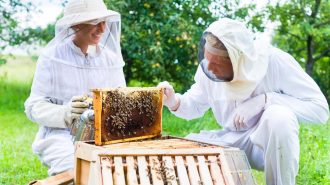-
News & EventsNews & EventsEdit Template
Sign-up Now!

Join our Newsletter to receive Eversweet’s latest News & Events!
Total: 6 Courses View all
 EversweetLearn how to help your hives survive winter! Topics discussed are geared for the mid-Atlantic region, however, concepts/methods can be applie...Beginner1 Lectures1.5 hours$25
EversweetLearn how to help your hives survive winter! Topics discussed are geared for the mid-Atlantic region, however, concepts/methods can be applie...Beginner1 Lectures1.5 hours$25 EversweetBe sure to get the best info about how to prepare your bees for fall/winter! Our Colony Fall Prepping Class is available online to view atBeginner1 Lectures1.5 hours$25
EversweetBe sure to get the best info about how to prepare your bees for fall/winter! Our Colony Fall Prepping Class is available online to view atBeginner1 Lectures1.5 hours$25 EversweetLearn how to prevent and control honeybee swarming!Beginner1 Lectures1.5 hours$25
EversweetLearn how to prevent and control honeybee swarming!Beginner1 Lectures1.5 hours$25 -
Bee EducationOnline Bee EducationBee EducationHoney RecipesEdit Template
Online Bee Education
Edit TemplateEdit Template


















